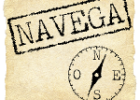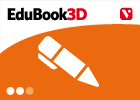Cargando...
Recursos educativos
-
Nivel educativo
-
Competencias
-
Tipología
-
Idioma
-
Tipo de medio
-
Tipo de actividad
-
Destinatarios
-
Tipo de audiencia
-
Creador
Lo más buscado
- Murales
- Informática niños
- Globoflexia
- Día del padre
- Capitales de África
- Instrumentos musicales
- actividades lengua primaria
- Comunidades autónomas
- Residuos sólidos urbanos
- juegos lengua
- Relieve de Africa
- Pasatiempos matemáticos
- Lagos de Asia
- Ejercicios escolares para niños de 7 años
- Experimento Torricelli
-

Self-evaluation 7 - The Earth's relief
EduBook Organización
- 3362 visitas
Match each characteristic to a continent: A group of islands that make up part of this continent is known as Micronesia. A thick layer of ice completely covers this continent. The location of the…
-

Observe. A marine ecosystem
EduBook Organización
- 3350 visitas
Look at the drawing of a marine ecosystem and answer the following questions: Which living beings appear in the ecosystem in the drawing? Look and explain the relationships between the living beings in…
-

The Metal Ages
EduBook Organización
- 3349 visitas
4.1. Metalworking The first metal used for tools and weapons was copper, then bronze in the 5th millennium BC, and later iron. These metals were more resistant and efficient than stone. At first they…
-

Observe. Society in the Empire
EduBook Organización
- 3350 visitas
Look at the diagram showing Roman society and do the activities: List the social groups that existed in imperial Rome. What was the difference between them? Explain the rights of each person in the diagram.
-

Final evaluation 3 - The Roman Empire
EduBook Organización
- 3345 visitas
How did the political system work during the Republic?
-

Evaluación final - Las fuerzas y el movimiento
EduBook Organización
- 3348 visitas
Los tres nombres más relevantes en el desarrollo histórico de las leyes de la naturaleza que relacionan las fuerzas y el movimiento son Aristóteles, Galileo y Newton. El filósofo griego Aristóteles…
-

A vueltas con las letras (continuación).
Antonio Salvadores Fernández Docente
- 10 lo usan
- 1382 visitas
En la anterior ocasión nos quedamos planteando el problema de qué hacíamos con las letras en el diccionario, ya que nos surgía una dificultad con las mayúsculas y minúsculas,…
-

-

Introducción - Enlace químico
EduBook Organización
- 3341 visitas
Existen millones de compuestos químicos, pero poco más de un centenar de elementos. Este hecho muestra la gran facilidad que tienen los átomos de los elementos para unirse entre sí y formar…
-

Evaluación Final tema 10 act 07 - El lenguaje de la Química
EduBook Organización
- 3345 visitas
¿Qué número de átomos contiene 1 mol de cobre? ¿Y 1 mol de cloro? Recuerda que el cloro está formado por moléculas de cloro, Cl2.
Te estamos redirigiendo a la ficha del libro...










